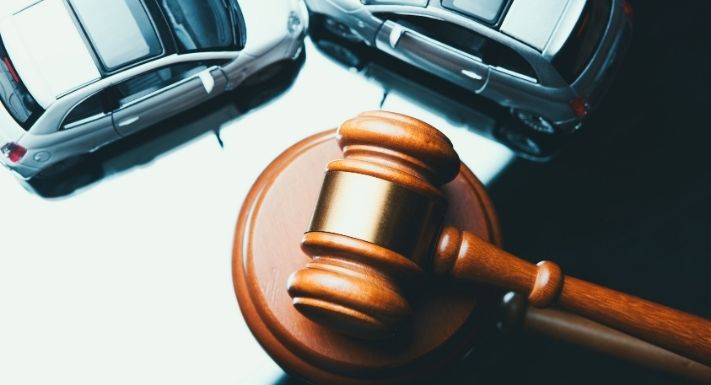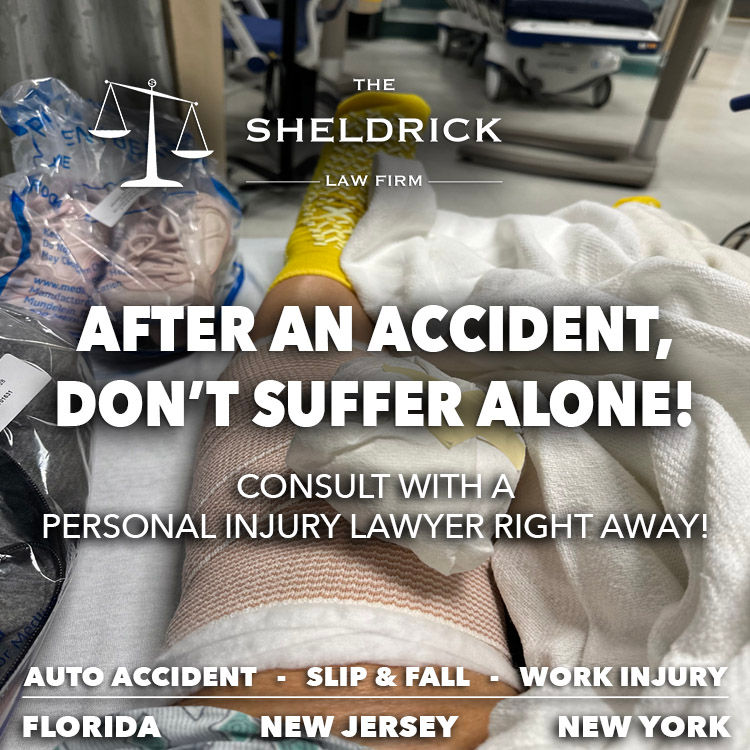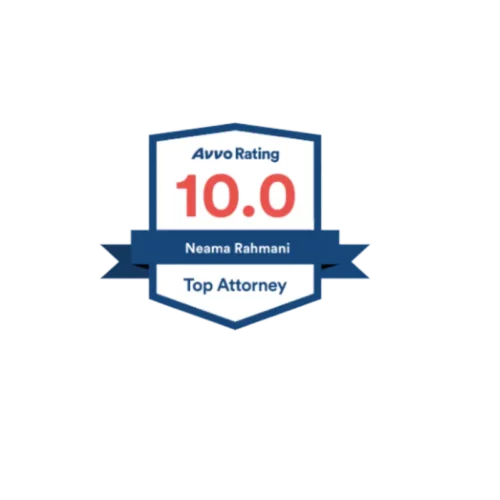Introduction
It can all happen in the blink of an eye. One moment, you’re calmly driving down the road, and the next, you’re involved in a car accident. It can be a terrifying and confusing experience, especially if you’re injured. If you’ve been injured in a car accident, you may be wondering what your legal options are. You may be entitled to compensation for your injuries, lost wages, and other expenses. A car accident lawsuit can help you get the justice you deserve.
What to Do After a Car Accident
If you’re involved in a car accident, it’s important to stay calm and follow these steps:
What is a Car Accident Lawsuit?
A car accident lawsuit is a civil action that alleges that one driver was negligent and caused the accident. In order to win a car accident lawsuit, you must prove that:
What Damages Can I Recover in a Car Accident Lawsuit?
If you win a car accident lawsuit, you may be entitled to recover damages for:
How Long Do I Have to File a Car Accident Lawsuit?
The statute of limitations for filing a car accident lawsuit varies from state to state. In most states, you have two years from the date of the accident. It is important to check the statute of limitations in your state, so you don’t lose your right to file a lawsuit.
How Can a Lawyer Help Me With My Car Accident Lawsuit?
A lawyer can help you with every step of the car accident lawsuit process, including:
If you’ve been injured in a car accident, don’t hesitate to contact a lawyer to discuss your legal options. You may be entitled to compensation for your injuries, and a lawyer can help you get the justice you deserve.
Car Accidents Lawsuit: Who’s at Fault?
Getting into a car accident is never fun. It can be a scary and confusing experience, and it can be even more frustrating when you’re not sure who’s at fault. If you’ve been in a car accident, you may be wondering what your legal options are. One option is to file a lawsuit. But before you do that, you need to determine who is liable for the accident. This can be a complex process, but it’s essential for establishing liability and pursuing a lawsuit.
Determining Liability
Determining who is at fault for a car accident can be complex, but it’s essential for establishing liability and pursuing a lawsuit. There are a number of factors that can be considered when determining liability, including:
- The driver’s actions
- The condition of the vehicles
- The condition of the road
- The weather conditions
In most cases, liability is determined by proving that the other driver was negligent. Negligence is defined as a failure to exercise the care that a reasonably prudent person would have exercised in the same situation. In other words, if the other driver did something that a reasonable person wouldn’t have done, or if they failed to do something that a reasonable person would have done, they may be liable for the accident.
There are a number of different ways to prove negligence. One common way is to show that the other driver violated a traffic law. For example, if the other driver was speeding or running a red light, this could be evidence of negligence. Another way to prove negligence is to show that the other driver was distracted. For example, if the other driver was texting or talking on the phone while driving, this could be evidence of negligence.
If you’ve been in a car accident, it’s important to speak to a lawyer to discuss your legal options. A lawyer can help you determine who is liable for the accident and can help you pursue a lawsuit if necessary.
Car Accident Lawsuit: A Comprehensive Guide to Damages Recovery
If you’ve been injured in a car accident, you may be considering filing a lawsuit. One of the challenges in navigating such a legal action is knowing what damages you can recover. In this article, we’ll delve into the different types of damages available to you, providing a roadmap to help you determine what compensation you may be entitled to.
Medical Expenses
After a car accident, medical expenses can pile up quickly. These expenses may include:
- Hospitalization
- Doctor visits
- Medication
- Physical therapy
- Rehabilitation
In your lawsuit, you can seek compensation for all reasonable and necessary medical expenses resulting from your injuries.
Lost Wages
A severe car accident can disrupt your ability to work. If you’ve lost wages as a direct result of your injuries, you may be entitled to compensation for:
- Time off from work
- Reduced earning capacity
- Loss of future income
Determining lost wages requires calculating your hourly or daily rate and multiplying it by the number of hours or days you’ve been unable to work due to your injuries.
Pain and Suffering
Beyond medical expenses and lost wages, you can also recover compensation for your pain and suffering. This is known as non-economic damages and encompasses the physical, emotional, and psychological impact of your injuries.
Pain and suffering damages can include:
- Physical pain
- Emotional distress
- Loss of enjoyment of life
- Disfigurement
- Disability
Quantifying pain and suffering is oftentimes more subjective than calculating medical expenses or lost wages. However, a jury or judge will consider the severity and duration of your injuries, as well as your medical records and testimony, to determine an appropriate amount of compensation.
Steps to Filing a Car Accident Lawsuit
The Aftermath of a Wreck
Filing a car accident lawsuit can be a daunting prospect, especially in the aftermath of an accident when you’re likely dealing with injuries, insurance companies, and the stress of disrupted life. But understanding the process can help you navigate the legal maze and get the compensation you deserve.
Step One: File a Complaint
The first step in filing a lawsuit is to file a complaint with the court. This document outlines the details of your accident, including when and where it happened, who was involved, and the injuries or damages you sustained. It’s essential to file your complaint within the statute of limitations in your state, or you may lose the right to seek compensation.
Step Two: Serve the Defendant
Once you file your complaint, you need to serve the defendant (the person or entity you’re suing) with a copy of the document. This can be done through a process server or the sheriff’s office. The defendant will then have a specific amount of time to respond to your complaint.
Step Three: Discovery
Once the defendant has responded, the discovery process begins. This is where both parties exchange information relevant to the case, such as medical records, witness statements, and insurance policies. Discovery is crucial for building a strong case and narrowing down the issues in dispute.
Step Four: Trial Preparation
Based on the evidence gathered during discovery, your attorney will begin preparing for trial. This includes preparing witnesses, drafting motions, and developing a trial strategy. The goal is to present a compelling case that supports your claims for damages.
Step Five: Trial and Verdict
If your case cannot be resolved through settlement, it will go to trial. A jury will hear the evidence and decide whether the defendant is liable for your injuries. If the jury finds in your favor, they will award you damages to compensate you for your losses.
Car Accident Lawsuits: Your Essential Guide
If you’ve been involved in a car accident, you may be considering filing a lawsuit. While most car accident lawsuits settle before going to trial, it’s crucial to be informed about the negotiation process and your legal rights. This article will provide you with a comprehensive understanding of car accident lawsuits, from negotiating settlements to understanding your options if a settlement can’t be reached.
Negotiation and Settlement
The vast majority of car accident lawsuits settle before trial. This is often the most efficient and cost-effective way to resolve a case. However, it’s important to approach negotiations with a clear understanding of your rights and the value of your case. An experienced car accident lawyer can help you navigate the negotiation process and ensure that you receive a fair settlement.
If you’re negotiating a settlement, be prepared to provide documentation of your injuries, expenses, and lost wages. You should also be prepared to discuss the liability of the other driver and the extent of your damages. It’s important to be realistic about your expectations and to be willing to compromise. However, you should never accept a settlement offer that is less than what you deserve.
Navigating the Legal Maze of Car Accident Lawsuits
When you’re involved in a car accident, dealing with the aftermath can be daunting. From medical bills and lost wages to insurance companies and legal jargon, it’s easy to feel overwhelmed. If you’ve been injured in a car accident, you may consider filing a lawsuit to recover damages and hold the at-fault party accountable.
Filing a Lawsuit
The first step in filing a car accident lawsuit is to gather evidence to prove your case. This may include police reports, medical records, witness statements, and photographs. You should also consult with an attorney who specializes in personal injury cases. They can help you assess your case and guide you through the legal process.
Negotiating a Settlement
Most car accident lawsuits are settled before going to trial. Settlement negotiations involve an exchange of offers between you and the at-fault party’s insurance company. This can be a complex and time-consuming process, but with a skilled attorney on your side, you can increase your chances of reaching a fair settlement.
Going to Trial
If settlement negotiations are unsuccessful, you may need to go to trial to resolve your case. This is a complex and stressful process, but it can also be the best way to get the compensation you deserve. Here are some key considerations:
Jury Selection: The jury will determine the outcome of your case, so it’s crucial to select jurors who are fair and impartial. Your attorney will question potential jurors to assess their biases and ensure that you have a jury that is receptive to your arguments.
Opening Statements: The opening statements are an opportunity for both sides to present their case to the jury. Your attorney will outline the facts of the accident and explain why the at-fault party is liable for your injuries.
Evidence Presentation: The next stage of trial involves presenting evidence to support your case. This may include medical records, photographs, witness testimony, and expert testimony. Your attorney will present evidence in a way that makes it clear and convincing to the jury.
Closing Arguments: Once the evidence has been presented, both sides will deliver closing arguments. This is the chance for your attorney to summarize the evidence and make a final plea to the jury.
Jury Deliberation: After the closing arguments, the jury will deliberate to reach a verdict. The jury must reach a unanimous decision in order to find the at-fault party liable. If the jury finds in your favor, they will award you damages to compensate you for your injuries.
Car Accident Lawsuit: A Guide to Seeking Compensation
Have you been involved in a car accident? If so, you may be entitled to compensation for your injuries and damages. Filing a car accident lawsuit can be a complex and daunting process, but it’s important to understand your rights and options. This article will provide you with a comprehensive guide to navigating a car accident lawsuit.
Choosing the Right Attorney
Choosing the right attorney is crucial for the success of your car accident lawsuit. Consider their experience, reputation, and fees. An experienced attorney will have a deep understanding of the law and the complexities of car accident cases. A good reputation is essential, as it indicates that the attorney has a track record of success. Finally, you’ll need to consider the attorney’s fees. Most attorneys work on a contingency basis, meaning they only get paid if you win your case. The percentage they charge can vary, so it’s important to compare rates before making a decision.
Investigating the Accident
Once you’ve chosen an attorney, they will begin investigating the accident. This will involve gathering evidence, such as police reports, witness statements, and medical records. The investigation will help to determine who was at fault for the accident and the extent of your injuries.
Filing a Lawsuit
If the investigation reveals that you have a strong case, your attorney will file a lawsuit on your behalf. The lawsuit will outline your injuries and damages, and it will demand compensation from the at-fault party. The lawsuit will be filed in the appropriate court, and the defendant will have the opportunity to respond.
Negotiating a Settlement
Most car accident lawsuits are settled before going to trial. This is because both parties can avoid the time and expense of a trial. Your attorney will negotiate with the defendant’s insurance company to reach a settlement that is fair to you. The settlement will typically include compensation for your medical expenses, lost wages, and pain and suffering.
Going to Trial
If you and the defendant cannot reach a settlement, your case will go to trial. A trial is a formal proceeding in which a judge or jury will hear evidence and make a decision. Your attorney will present your case to the court, and the defendant will have the opportunity to present their side. The trial process can be long and stressful, but it may be necessary to get the compensation you deserve.
Conclusion
Filing a car accident lawsuit can be a complex and challenging process, but it’s important to understand your rights and options. By following these steps, you can increase your chances of success and get the compensation you deserve.
Car Accident Lawsuits: A Comprehensive Guide
After the chaos of a car accident, filing a lawsuit may seem like the furthest thing from your mind. However, understanding your legal rights and options is crucial for protecting your interests and seeking compensation for your injuries. Navigating the legal complexities of a car accident lawsuit can be daunting, but with proper guidance, you can secure the justice you deserve.
Determining Liability
Establishing liability in a car accident lawsuit is paramount. This involves identifying the party or parties responsible for causing the crash. Common factors considered include negligent driving, such as speeding or distracted driving, as well as equipment malfunctions or road defects. Proving liability requires gathering evidence, including police reports, witness statements, and expert testimony.
Filing a Lawsuit
Once liability has been established, you can file a lawsuit. The initial step is to draft a complaint that outlines the details of the accident, the injuries sustained, and the damages being sought. The complaint is then filed with the appropriate court, initiating the legal process.
Negotiations and Settlement
In many cases, car accident lawsuits are settled out of court through negotiations between the parties involved. This process involves discussing and agreeing upon a settlement amount that compensates the injured party for their losses. Settlements offer several advantages, including speed, privacy, and the avoidance of a lengthy trial.
Going to Trial
If negotiations fail, the case proceeds to trial. During the trial, both parties present their evidence and arguments before a judge or jury. The outcome of the trial determines whether the injured party is entitled to compensation and the amount awarded.
Types of Damages
Car accident lawsuits can seek compensation for a wide range of damages, including medical expenses, lost wages, property damage, pain and suffering, and emotional distress. The specific damages sought will vary depending on the severity of the injuries and the impact on the victim’s life.
Statute of Limitations
It’s important to note that each state has a statute of limitations for filing a car accident lawsuit. This is a deadline by which legal action must be taken, and failure to meet it can bar your claim. It’s essential to consult with an attorney promptly after an accident to ensure your rights are protected.
Choosing an Attorney
Selecting the right attorney is crucial for the success of your case. Look for an experienced attorney with a proven track record in car accident law. They should be compassionate, communicative, and dedicated to protecting your interests. Don’t hesitate to interview multiple attorneys to find the best fit for your needs.
Conclusion
Navigating a car accident lawsuit can be a complex and challenging process. However, by understanding your legal rights, choosing the right attorney, and staying informed throughout the process, you can increase your chances of obtaining a favorable outcome. Remember, you are not alone in this journey. Don’t let the aftermath of a car accident define your life—seek justice and compensation for the wrongs you’ve suffered.





Leave a Reply